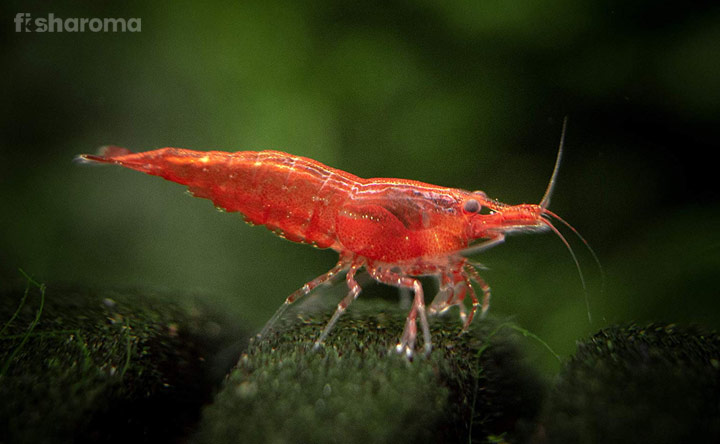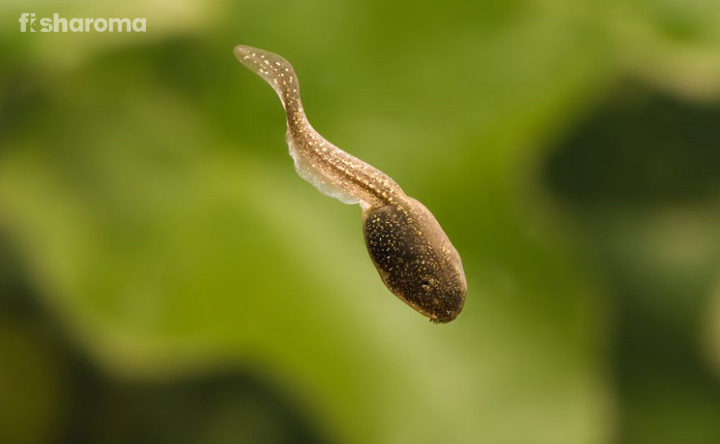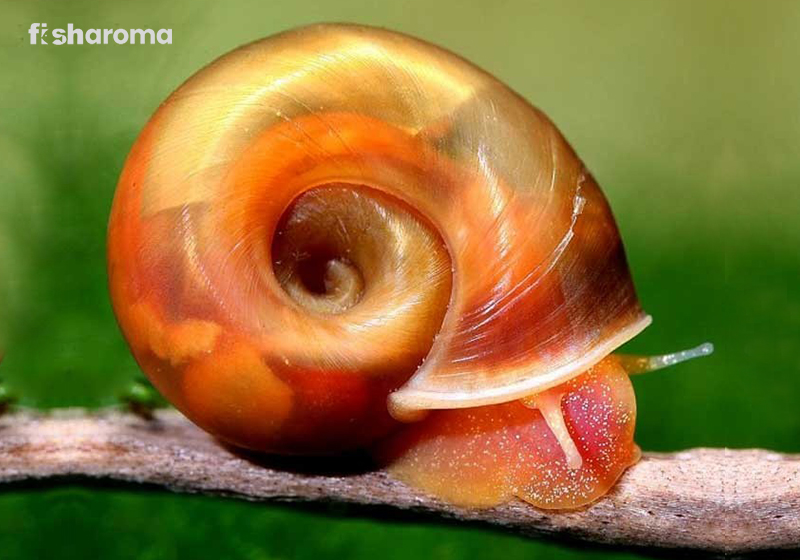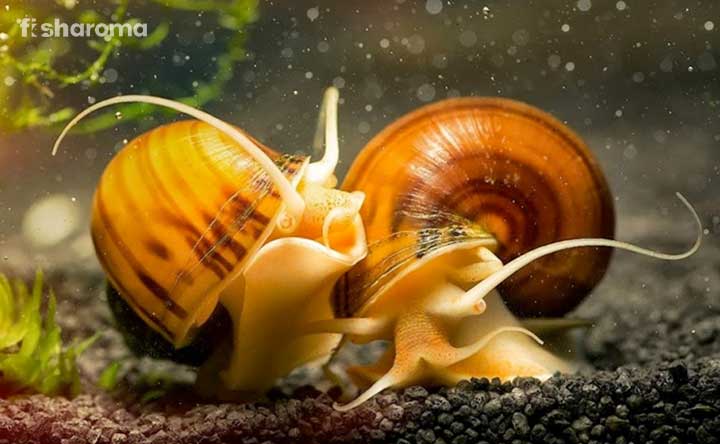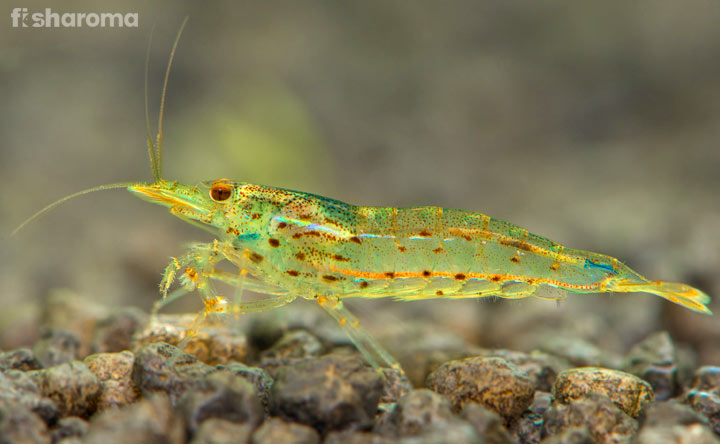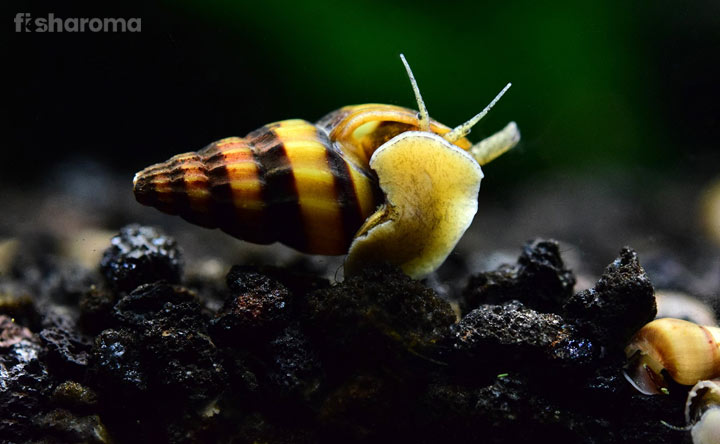Ghost Shrimp Care Guide – Feeding, Breeding, Tank Requirement and More

- Origin of Ghost Shrimp
- Appearance of Ghost Shrimp
- Life Span and Molting of Ghost Shrimp
- Temperament of Ghost Shrimp
- Suitable Tankmates for Ghost Shrimp
- Dietary Requirements for Ghost Shrimp
- Habitat and Tank Requirements for Ghost Shrimp
- Water Type for Ghost Shrimp
- Breeding Process of Ghost Shrimp
- Diseases of Ghost Shrimp with Intervention
Although its name is Ghost Shrimp, it is more closely related to the family of Crabs. This crustacean resembles tiny Lobsters. If you want to add some new aquatic pets in your tank, then Shrimps can really do well in your aquarium. Being easy to care, this crustacean can be a great member of your freshwater community tank which consists of peaceful inhabitants. Moreover, Ghost Shrimp is an efficient tank cleaner because it consumes the algae and other wastes in your tank. You can keep a Shrimp in your paludarium also. Going through the care guide may help you know more about this non-fish pet when you are planning to keep it in your aquarium.
Quick Details on Ghost Shrimp
Most of the fishkeepers consider Shrimps as the foods of their omnivore and carnivore pet fish, but some aquarists are interested in petting crustaceans, and Ghost Shrimp is an ideal non-fish pet for them. So, before getting the entire care guide, take a look at the quick details of this crustacean.
| Scientific Name | Palaemonetes paludosus |
| Origin | North America |
| Life-Span | 1 year |
| Colors | Transparent, Greenish, Light Yellow, Pale Pink, Orange |
| Temperament | Peaceful |
| Size | 1.5” (3.81 cm) |
| Diet | Omnivore |
| Family | Palaemonidae |
| Compatibility | With Other Peaceful Fish and Invertebrates |
| Tank Size | 5-10 gallons |
| Care Level | Easy |
Overview
Ghost Shrimps are expert burrowers that spend their time digging mud. So, a thick substrate is usually kept in the tank of this crustacean. This shrimp is also known as Glass Shrimp and Eastern Grass Shrimp. This crustacean always lives in a group, so try to keep 2-4 Ghost Shrimps in an aquarium. As a scavenger, this Shrimp clears up the uneaten foods, waste particles, and algae, and clean the tank.
Origin of Ghost Shrimp
The fossils of Ghost Shrimps were found in Cretaceous and Lower Jurassic periods. Later it was founded in the 1850s near the freshwater of North America in New Jersey and Florida. This crustacean is also found in the Eastern part of Appalachian Mountain and Southern Africa. Now, it is globally popular and most of the aquarists keep it in their aquarium.
Appearance of Ghost Shrimp
The other name of Ghost Shrimp is Glass Shrimp. So, the transparent color of this invertebrate matches with its name. Some of the shrimps are light green-shaded and others are yellow-orange.
The male Ghost Shrimps can grow up to 1.5” (3.81 cm) and the females are larger than the males. These Shrimps have two pairs of antennae on the mouth point; one is long and another is short. These sensory organs help the Shrimp detect their food in the water.
There is a beak-like extension between its eyes in front of the carapace which is known as a rostrum. The eyes of this shrimp are developed with globular pigmented corneas.
There is a hard-protective shell known as a carapace that protects the softer parts of the Shrimp during self-defense. You will find six flexible abdominal segments behind the carapace, and they house the pairs of swimming limps of the Shrimp. The sixth abdominal segment of the Shrimp is connected with its tail region. The fourth segment embodies the uropod, the fan-shaped tail of the Shrimp.
Life Span and Molting of Ghost Shrimp
As discussed previously, Ghost Shrimp can live up to one year. Though their lifespan is short, the specimens molt regularly while growing. Their shells are enlarged when they start growing. With increasing age, these Shrimps start molting. After the death of the Shrimp, you don’t need to pick it out from the tank because the other invertebrates and fish breeds can consume the dead shrimp.
Temperament of Ghost Shrimp
Ghost Shrimp is peaceful and easy to breed. It is a hardy invertebrate, but it cannot live for more than one year. It is a bottom-dwelling inhabitant that is found gazing at the things of the aquarium the entire day. This crustacean always consumes crustacean, so it lives in the bottom part of the aquarium.
Suitable Tankmates for Ghost Shrimp
Shrimps are peaceful species that prefers living with non-aggressive fish and other invertebrates. Some appropriate tankmates for Ghost Shrimp are:
- Cherry Barb
- Loaches
- Cory Catfish
- Hatchetfish
- Snails
- Crabs(Pom Pom Crab)
Unsuitable Tankmates
Never keep large predator fish and precarious invertebrates with Ghost Shrimp because they may disturb Shrimps or eat them up. Some unsuitable tankmates of shrimp are:
- Betta Fish
- Molly Fish
- Silver Arowana
- Turtles
- Frogs
Compatibility of Ghost Shrimp
It is a good idea to keep a group of shrimps together in a fish tank. You can keep 2-4 crustacean in an aquarium. You can also keep other shrimps with Ghost Shrimp such as:
- Bamboo Shrimp
- Vampire Shrimp
- Amano Shrimp
Dietary Requirements for Ghost Shrimp
It is easy to feed Ghost Shrimp as it is a greedy species that will eat anything you present in front of it. Still, a question lies in the mind of the aquarists, what does Ghost Shrimp eat. Some of the favorite foods of this omnivore crustacean are:
- Algae
- Daphnia
- Newborn Brine Shrimp
- Almon Leaves
- Bloodworm
- Spirulina
- Squid
- Mosquito Larvae
- Fish Pellets
- Algae Wafer
- Cucumber
- Blanched Vegetables
- Spinach Crumbs
- Romaine
- Zucchini
- Algae
Shrimps are tiny creatures, so it is suggested to feed them in a small amount at a time. Feed different types of food to your pet Ghost Shrimps at different times of the day. Don’t keep many fish and crustaceans together in the tank of Ghost Shrimp, otherwise other species may eat the foods of your pet shrimp. It does not have any particular time of feeding, so you can plan your own schedule while feeding them.
Habitat and Tank Requirements for Ghost Shrimp
Ghost Shrimp is a freshwater crustacean that lives in lakes and rivers. It hides inside the sediment under the water. So, while building a tank, you need to keep a thick substrate at the bottom of the aquarium, so that the shrimp can hide or take rest inside it. There are some other factors that are needed to be followed while setting a tank.
Tank Size
A 5-10 gallons aquarium is enough for keeping around 3-4 Ghost Shrimps but don’t overcrowd the tank.
Ornaments
An ideal aquarium for shrimps should consist of green live plants such as Cabomba, Java Moss, and Hornwort. Plants provide areas for shrimps to hide particularly during the time of molting. Try to keep small rocks and fine gravels at the bottom of the tank to decorate it. Fine grains prevent the foods from sinking into the sediment.
Filter
You can install a sponge filter in the tank of your pet crustacean because shrimp often releases biological load, so it is necessary to keep the water of the tank clean by installing an air pump or a filter. Also, clean the filter of the tank once a week because a dirty filter may not work properly.
Lighting
Standard lighting is enough for the tank of a Ghost Shrimp because it does not need much lighting, as it is a nocturnal species and hides in the substrate of the aquarium.
Water Type for Ghost Shrimp
Ghost Shrimps are not fussy, so a standard tropical aquarium condition is enough for them. You just need to follow a few important factors for setting the tank of a shrimp.
Temperature
The temperature of the tank can range between 65-82ºF (18.33-27.77ºC), as shrimps prefer living in moderate water.
pH Level
The pH level of the water should be 7.0-8.0.
Hardness
The hardness of the water 3-10 dKH.
Cleaning Method
Overstocking and overfeeding can result in a dirty tank, so keep limited species in an aquarium. Monitor the ammonia and nitrate levels because these elements are toxic for your pet crustacean and fish. A weekly water change will help you control the chemical levels.
While cleaning the tank, use a brush and liquid soap to scrub the walls and decorations of the aquarium. After washing the tank and the decorations, wipe them with a dry cotton cloth.
Replacement Procedure
It is not possible to change the water regularly, but you can replace about 10% of the water in a week or 20% of the water in a month.
Breeding Process of Ghost Shrimp
The male and female Ghost Shrimp are dimorphic and they can be differentiated by their first and second pleopods. The male shrimp use the first and the second pleopods for transferring spermatophores to the female. The incubation period of the larvae of the shrimp is 12-14 days. The female uses its pleopod to carry eggs and its ovaries become greenish when it is about to lay eggs.
It is easy to breed a Ghost Shrimp. You need a separate breeding tank where the shrimps can lay eggs. It can lay 20-30 small eggs at a time. It takes three weeks for a Ghost Shrimp to lay its eggs. The male shrimp fertilizes the dotted eggs. After the eggs are fertilized, move the parents of the shrimps to the main tank and provide a good environment to the newborn crustaceans.
A sponge filter is needed in the breeder tank to maintain the quality of the water. You should keep a thin layer of sediment at the bottom of the tank, and decorate the breeding tank with fresh plants. Some plants act as a food source of the newborn shrimp. You should feed larvae, algae and plant debris in small amounts to the shrimps. Once their legs grow up, feed the same foods to the adult shrimp. After 4-5 weeks, the shrimps grow adult and can to be moved to the main aquarium.
Diseases of Ghost Shrimp with Intervention
Ghost Shrimps often live on the substrate present at the bottom of the water column, so they are highly affected by the exchange of microflora between the digestive system and the environment. This condition increases the risk of proliferation of the destabilization of Microflora and unfavorable Gut Microflora, which affects adversely the digestive system of the shrimp.
The digestive system of this crustacean is the entry port of bacterial, protozoan and viral infections which are the source of the major risk of Gut Track diseases such as White Gut Disease (WGD), White Feces Syndrome (WFS) and White Muscle Disease (WMD).
So, you need to keep the environment of the aquarium clean and maintain the food balance of the Ghost Shrimp. Overfeeding can be the other reason for the digestive problem in a shrimp.
Reading the care guide will definitely help you keep a Ghost Shrimp healthily in your aquarium. Petting crustaceans are easy nowadays if you follow proper ways to take care of the little species.
Interesting Facts
- Ghost Shrimps are also known as Pink Nippers, Burrowing Shrimps, Ghost Nippers and Yabbies.
- These shrimps are usually collected by using the yabby pump.
- These crustaceans live both in muddy and sandy areas.
- Ghost Shrimp shed its skin every month like a snake.
- Shrimps love sharing their burrows with other species.
Know About the Care Guide of Other Shrimps
There are different varieties of shrimps apart from Ghost Shrimps, which you can keep in your aquarium. Know about their care guides that will help you in petting them.
- Amano Shrimp: This shrimp is also found in the rivers near North America like Ghost Shrimp. For petting this fish, take a look at its care guide.
- Cherry Shrimp: The dark color of Cherry Shrimp attracts aquarists. If you want to add some Cherry Shrimps in your tank, then go through its care guide.

